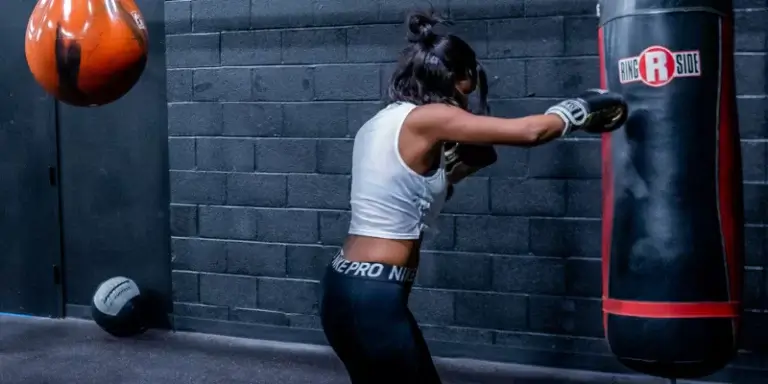Kickboxing vs. Aikido – What is the Difference?
Martial arts are a great way to get fit, stay active, and increase self-discipline. But comparing martial arts styles and deciding which is right for you can be overwhelming. Kickboxing and Aikido are two popular sports with many health benefits. But they are different in style.
Kickboxing is a striking-based combat sport that involves punches, kicks, and knee strikes. On the other hand, Aikido is a Japanese martial art that focuses on using an opponent’s energy and movements against them through joint locks and throws, emphasizing self-defense and redirection rather than striking.
In this blog post, I’ll compare these two martial arts and show their differences. Read until the end to get more ideas about these two sports.
The History of Kickboxing & Aikido

Kickboxing is a hybrid martial art that combines elements of karate and boxing into one form. The earliest precursors of kickboxing originated in Thailand, where it was practiced as a form of Muay Thai (also known as “Thai boxing”).
It was introduced to the Western world in the 1950s by American servicemen stationed in Japan during World War II. In the decades since then, kickboxing has become increasingly popular worldwide and is now practiced in many countries.
Aikido (“the way of harmonious spirit”) is a Japanese martial art founded in 1942 by Morihei Ueshiba. Ueshiba developed Aikido after studying several other fighting styles, such as judo, swordsmanship, and jiu-jitsu.
Unlike most other martial arts styles, Aikido is not focused on attacking or counter-attacking; instead, it emphasizes deflection and redirecting your opponent’s energy away from you while maintaining control over them.
This makes it an ideal practice for those seeking a peaceful resolution to conflicts rather than resorting to violence or aggression.
Difference between Kickboxing vs Aikido

Technique & Benefits
Kickboxing focuses primarily on striking techniques such as punches, kicks, elbows, and knees but also includes some grappling techniques such as throws and takedowns. It is primarily used for competitive fighting but can also be used for self-defense purposes if need be.
The primary benefit of kickboxing is improved physical fitness; practitioners will see gains in strength, speed, endurance, coordination, and agility due to the intense workout that comes with practicing kickboxing regularly.
Aikido also incorporates striking and grappling techniques but focuses more on deflecting an opponent’s attack than attacking them directly.
Its primary focus is on using leverage to take down an attacker without using excessive force or causing injury; this makes it well suited for self-defense situations where physical confrontation might occur but should be avoided if possible.
In addition to its practical applications in self-defense scenarios, Aikido also offers mental benefits such as increased focus and concentration and improved problem-solving skills due to its emphasis on strategic thinking during practice sessions.
Professional Scope & Popularity
The popularity of both kickboxing and aikido varies depending on location, with some countries being more favorable to one than the other.
Generally, though, kickboxing is more widely known as an international sport. The World Association of Kickboxing Organizations has organized it, and can be seen in many fitness gyms worldwide.
On the other hand, aikido isn’t as widespread and isn’t officially recognized by the International Olympic Committee (IOC). Millions worldwide still practice aikido, particularly in Japan, where it originated.
Training & Ability
When it comes to training abilities, both martial arts have their strengths. Kickboxing uses punches and kicks, while Aikido emphasizes throws, joint locks, and immobilization techniques.
Both focus on striking opponents with force but differ in how they do so. Kickboxing is known for its aggressive approach, while Aikido relies on defensive maneuvers like evading attacks rather than attacking head-on, as kickboxers do.
Body Stances Before & After Training
Regarding body stance, martial arts share similarities and unique stances before training begins.
For instance, kickboxers typically stand with feet shoulder-width apart and hands up in front of them like boxers do when preparing to punch or defend against punches from an opponent.
In contrast, aikidokas stand with one foot forward and arms down at their sides to protect themselves from possible attacks without causing aggressive movements that might lead to confrontation or escalation of conflict.
After each session ends, however, both martial artists will have adjusted their stances based on what they learned during training that day.
Watch the Video To Learn More About Kickboxing vs Aikido
Which Sport Causes More Injuries: Kickboxing or Aikido?
Regarding safety concerns for beginners in either art form, certain risks associated with each practice need to be considered before starting training sessions.
For example, kickboxers should be aware of potential injuries related to contact sports, such as bruises or sprains that could occur due to sparring matches or grueling workout sessions.
In contrast, aikidokas may experience joint pain due to applying certain techniques incorrectly or overusing certain muscles during practice sessions.
Ultimately, beginners in either practice must take all necessary precautions when engaging in physical activity. Use protective gear when necessary so as not to put themselves at risk for serious injury or strain during training sessions.
Frequently Asked Questions (FAQs)
Which martial art is more effective in a fight, Kickboxing or Aikido?
Kickboxing is generally considered more effective in a fight due to its focus on striking techniques and aggressive approach.
Can Aikido be used for self-defense?
Aikido can be used for self-defense but relies more on redirecting an opponent’s energy than direct strikes or submission holds.
Is Kickboxing better for fitness and conditioning?
Kickboxing is often preferred for fitness and conditioning as it provides a high-intensity workout, combining cardiovascular exercise with striking techniques.
Does Aikido involve any grappling techniques?
While Aikido does involve some grappling techniques, its primary focus is on joint locks, throws, and redirection of an opponent’s energy.
Which martial art is more popular, Kickboxing or Aikido?
Kickboxing is more popular worldwide, as it is widely practiced as a competitive sport, whereas Aikido has a smaller but dedicated following.
Conclusion
When deciding between kickboxing vs. aikido for self-defense purposes, it depends on individual preference. Both disciplines offer different techniques for defending oneself from attack.
Both martial arts have pros and cons associated with them that should be taken into consideration.
Ultimately, it’s important to remember that no matter what style you choose.
Always take proper precautions when engaging in physical activity, such as warming up properly and using protective gear to avoid injury during practice sessions.






